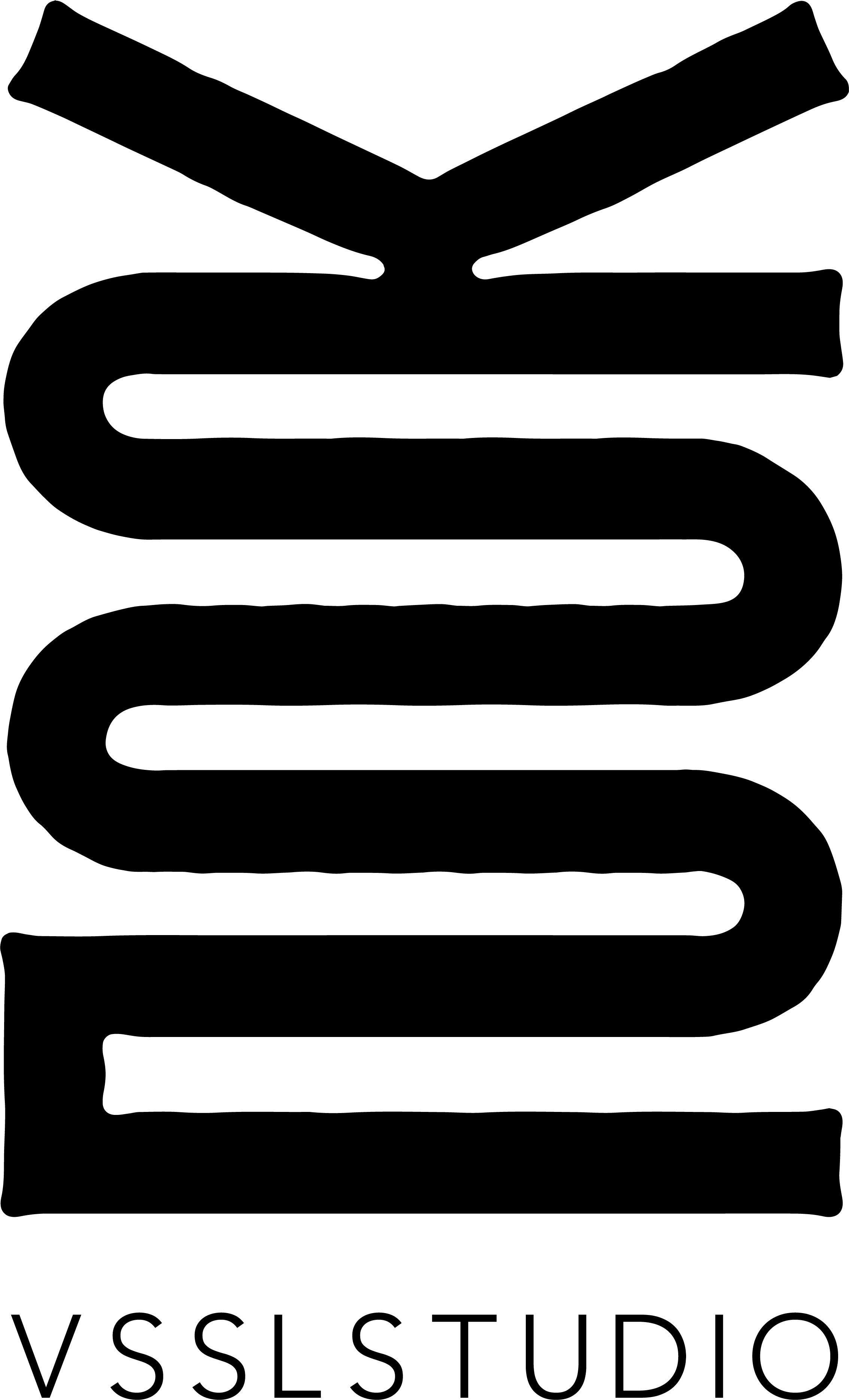HERMAPHROGENESIS
Marcin Gawin
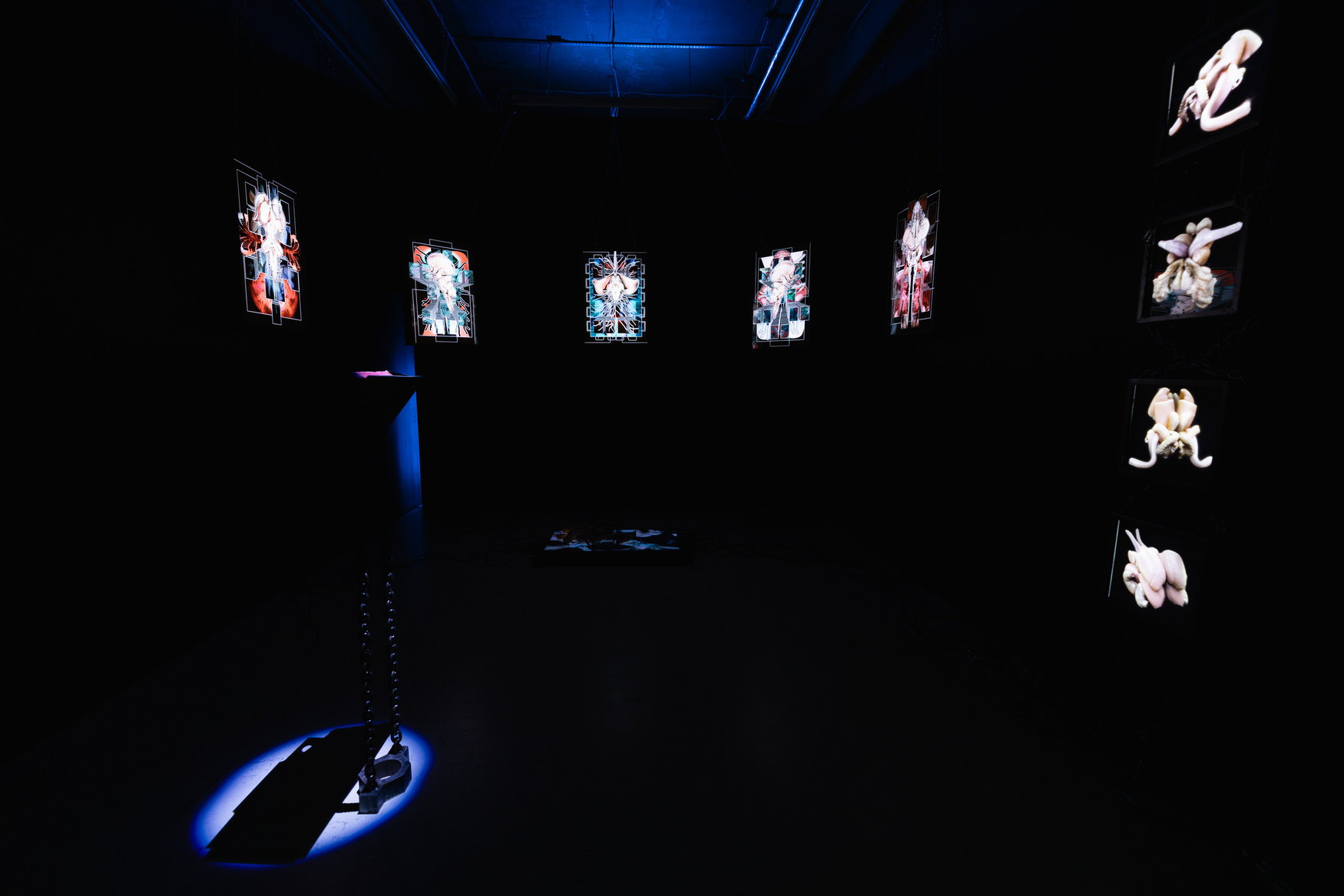
JANUARY 2024
“The Body operates in the cultural narrative that requires it to be stable and often relegates it as subservient to the mind. 'Face to the Seventh' is an inquiry into the correlation and the organisation of fixed systems, like the organisational fixations of the facial and organ systems. The presets in the installation are composed of the rearranged human viscera - with the exception of sexual organs - foregrounding parts that are a common denominator between all human organisms.”
Launch Event:
5-9pm, Friday the 12th of January 2024
RSVP Here
Exhibition Opening Hours:
12-5pm, Thursday to Sunday - 11th to 28th of January 2024
Curatorial Interventions: Dr Erinma Ochu in conversation with Marcin Gawin
6:30-8:30 pm, Friday 26th of January 2024
RSVP Here
FACET Expanded: On Hermaphrogenesis & Centering Queer Art
6:00-7:30 pm, Friday 16th of February 2024
As part of LGBTQAI+ History Month 2024 in Lewisham, VSSL Studio is hosting a talk to explain their recent 9-month programme, FACET.
RSVP Here



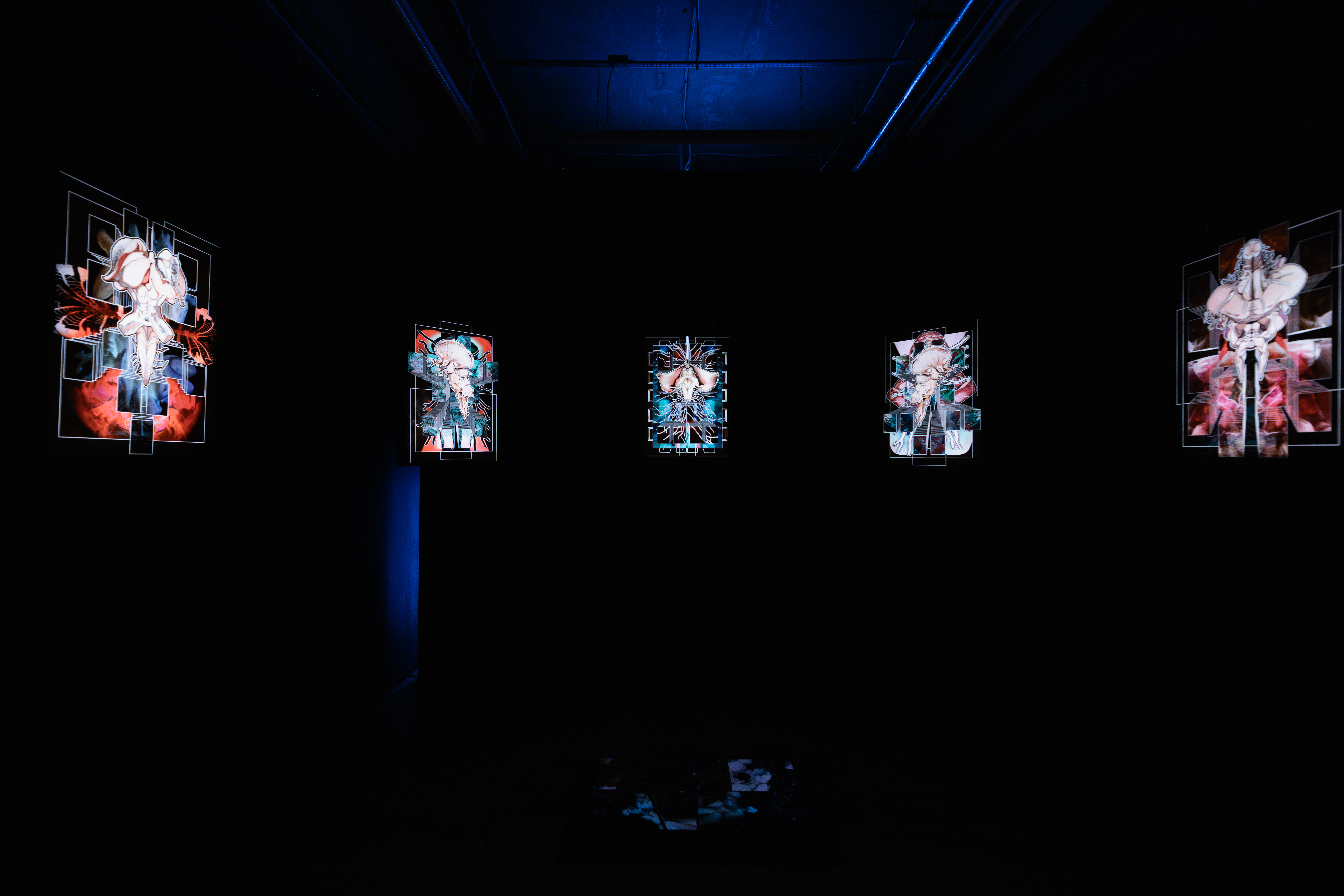



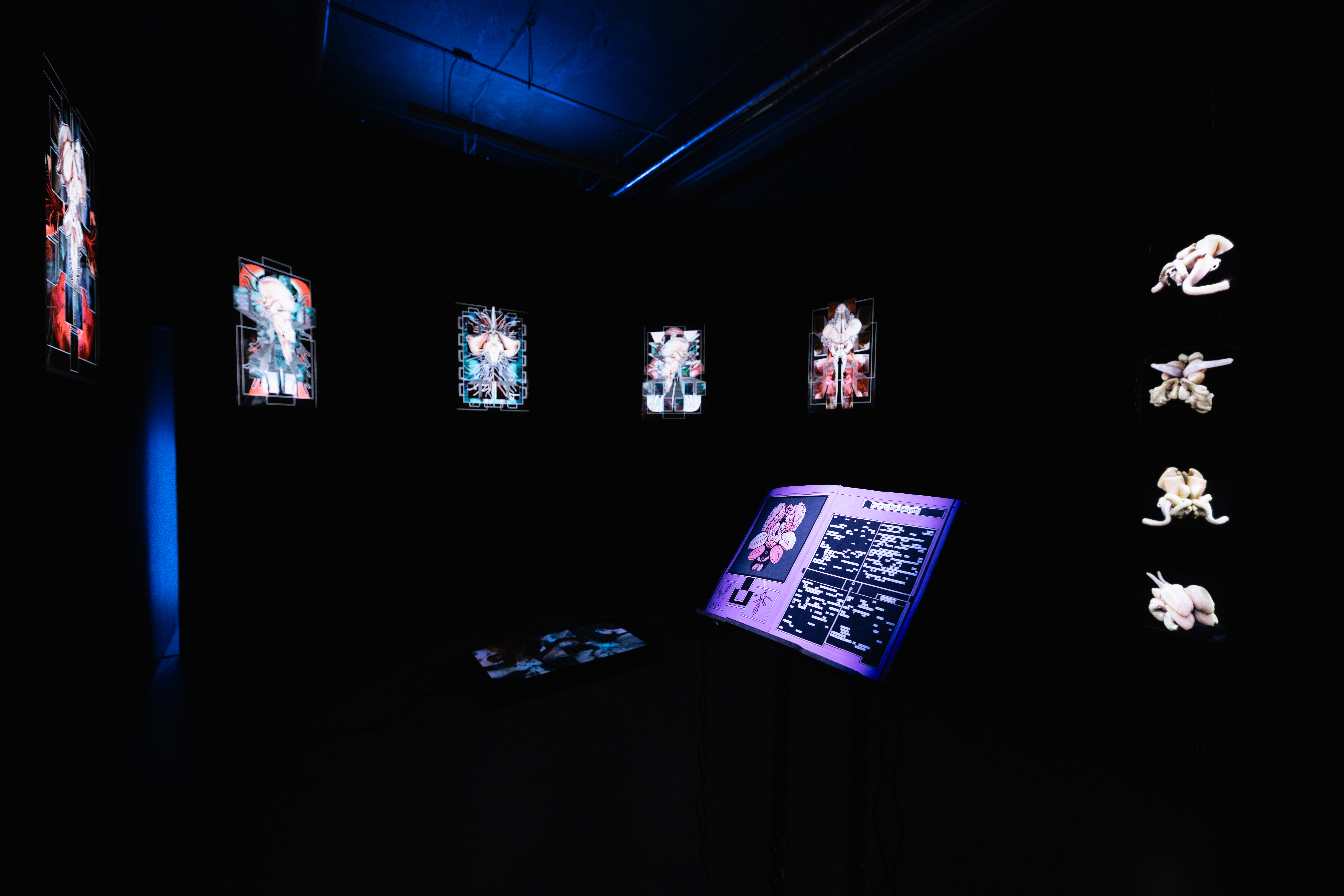



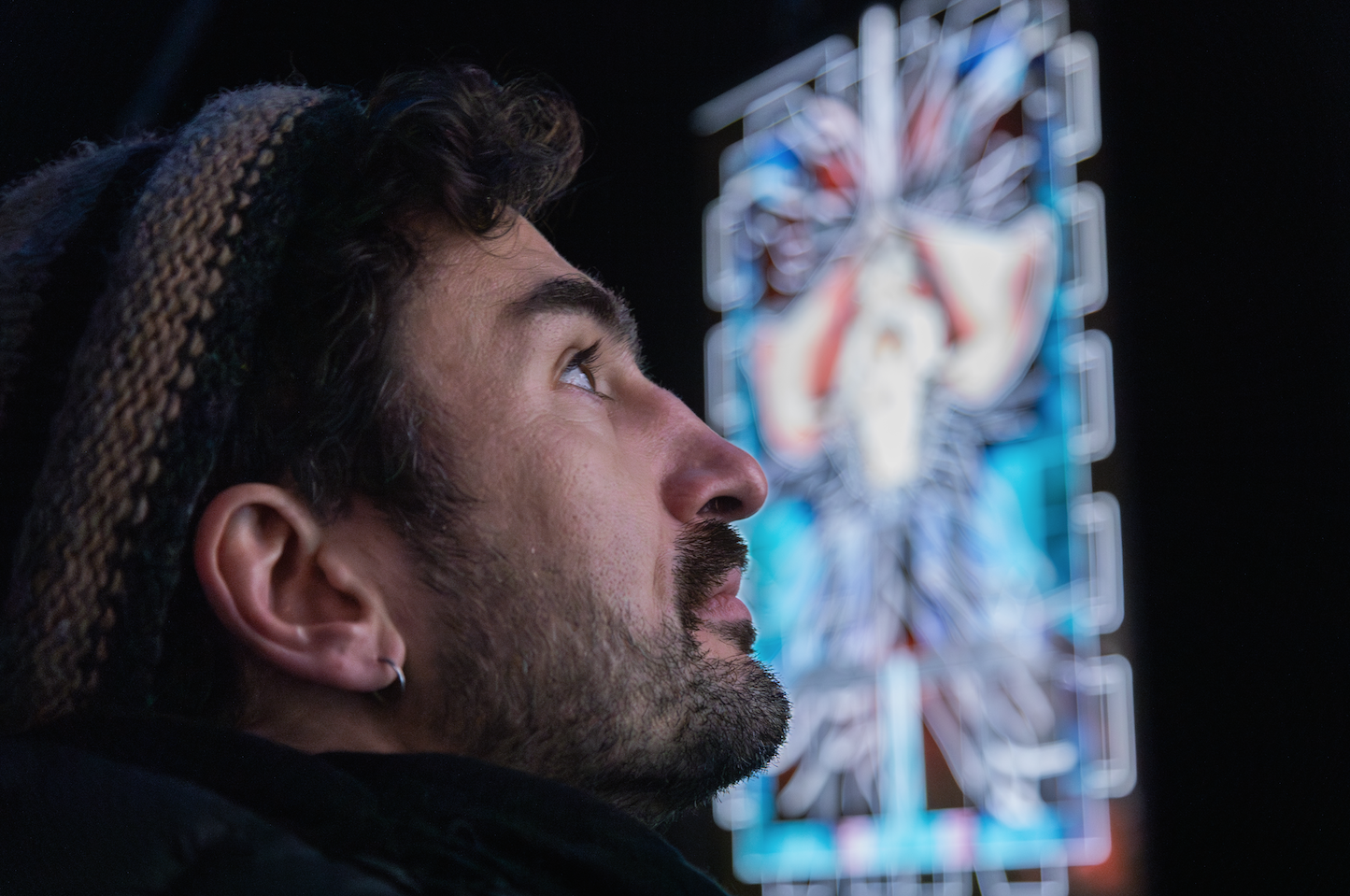



Hermaphrogenesis: Organs as Ruins of the Posthuman Body
By [M] DudeckLong ago, in Ancient Rome, the organs and entrails of sacrificed animals were decoded and interpreted by those tasked with defining the limits of reality. This ancient divination technique— called haruspicy – was performed by a trained priest – called a haruspex – who ritually consulted the liver, lungs, and heart of skinned beasts to discern the will of the gods.
Interdisciplinary artist Marcin Gawin performs a hybrid form of haruspicy in their new installation Hermaphrogenesis, remixing occult divination techniques with queer aesthetics in new forms of media. Here, the artist is interested in the body as a metaphor for the mutability of fixed systems. They hack biology by skinning the sciences, exposing the heteropatriarchal and anthropocentric institutionalization of bodies, both inner and outer, as a cyberpunk/witch haruspex. They etch, sculpt, diagram, exegete, cast, photograph, and manipulate a trinity of hand-crafted silicone organs, leaving us to decipher the will of the queer gods the artist has invoked on our behalf.
Gawin’s neo-goth, psychedelic laboratory/chapel circumnavigates the artist’s ongoing interest in re-imagining biology – and the body – as material for queer potentiality. They are transposing symbols from the sciences and religion into transmedial sigils, inviting the audience into an immersive hallucination, transposing organs into ruins for the posthuman body. A series of five illustrated iconographies, which the artist has titled ‘The large Head was split into five each’ – presents hyper-stylized illuminations of a brain stem spliced and flayed open in an illustrative style evoking anime, mediaeval iconography and early 90s internet art. These icons are illuminated with lightboxes and, suspended from the ceiling using chains and meat hooks, binding the aesthetic of BDSM with ceremonial magick.
A trinity of hand-crafted silicone organs– lungs, intestine, stomach – are re-arranged by the artist into mutant formations, evoking floral still-life drawings and inverted rorschach ink splots. The artist presents us again and again with the otherness of our interiority – exposing the influence of anatomical drawings in aiding the imagination to visualize that which we ourselves cannot see (our chthonic interiority.) By making the internal alien, and making that alienness mutable, Gawin creates a ceremony for us to absorb and embody their thesis: mutability and metamorphosis, nothing fixed, nothing set; forms at the mercy of endless reconstruction; queer Magick as the art of redefining reality:
One internal organ at a time.
At the centre of the installation is enshrined Gawin’s arcane Codex; an anatomical atlas turned punk grimoire titled “Face to the Seventh.” This textbook is annotated with biomorphic hieroglyphics and neo-mediaeval illuminations. It’s almost written in tongues, difficult to decipher but the artist appears to be inviting us to read it aloud as a devout priest might incant their sacred text in the temple. The blacked-out words echo redacted government statements that bridge the occultic with biopower and hint at the anarchist imperative to abolish the state (which still governs many of our internal organs).
The term hermaphrodite emerges from an ancient Greek myth, describing the proto-trans son/daughter of Hermes (the patron saint of alchemy) and Aphrodite (the goddess of lust, love, pleasure, and beauty), uniting male and female characteristics into a single unified organism. Genesis descends from the Greek describing origin, creation and generation. Hermaphro-Genesis is Gawin’s origin myth which the audience must read through the organs and entrails of their posthuman body. The organs at the nucleus of this exegesis perform as skinned internal landscapes, a micro-interiority ripped open, exposed and remythologized as queer talismans for the future. Hermaphrogenesis as a posthuman temple, sanctifies pareidolia (the process of perceiving meaningful images in ambiguous visual patterns) and elevates it to a metaphor for queerness.
CREDITS
Exhibition Text: [M] Dudeck
Sound and Composition: Nik Rawlings
Welding and Fabrication: Ash
Woodwork and Finishing: Pearl Sharp
SPECIAL THANKS:
Anna Gawin, Aleksandra Gawin, Beau Palmer, Calum Holden, Dana Holdampf, Daniel Gibbs, Jacek Gawin, Jahna, Jessica DeLeyza, Kuba Jablonowski, Lise Herman, Michal Czyz, Pat Janus, Pat Pinkowska, Pearl Sharp, Sacha Korsec, and VSSL Studio Team
ABOUT MARCIN:
Marcin Gawin is an interdisciplinary artist from Poland, based in Bristol, whose work encompasses image construction, installation, and live art. His fascination with the human body and its’ potential for transformation is evident in his practice, which explores the bodys function in mundane practicality, as well as in speculative and occult realities.
In 2019, Marcin completed Marina Abramovic’s Cleaning the House training in durational performance, further developing his expertise in this area. He also honed his skills in The Sunday Skool for Misfits, Experimenters, and Dissenters, where he studied under Martin O’Brien, Shabnam Shabazi, and Joseph Morgan Schofield in 2021.
Currently, Marcin is pursuing an MA in Virtual and Extended Realities at the University of the West of England, where he is researching the concept of embodied cognition in virtual environments and utilizing immersion as an artistic strategy.
Marcin's work has been presented at various locations, including the Palace International Film Festival in Bristol, Modern Art Oxford, Terytoria Festiwal in Poland, and Oxford Brookes University. His solo and participatory work is sure to leave a lasting impression.
@mrcn.gwn
-> Read more about the complete FACET programme HERE
about | programme | artists | space hire | archive | contact
VSSL studio, Unit 8, 50 Resolution Way. Deptford, London, UK. SE8 4AL
Contact: info@vssl-studio.org - Join our mailing list & follow our Instagram, Linkedin & Facebook.
VSSL studio logo design by Ben Normanton.
